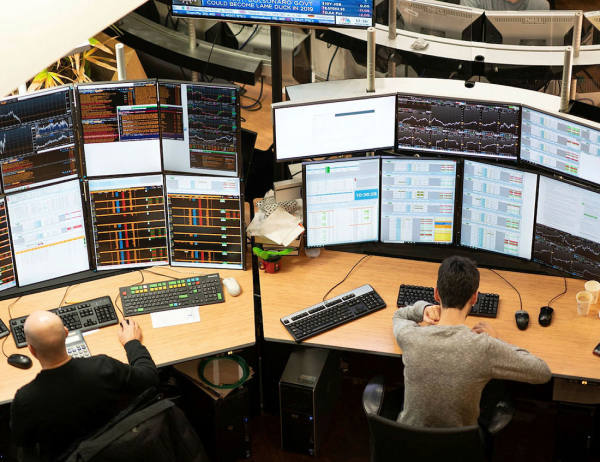- Ørsted is having a rough year.
- Can sentiment recover?
For such a small country, Denmark punches far above its weight when it comes to producing blue-chip companies.
During the past year, the Copenhagen market’s leading light has been multinational pharma firm Novo Nordisk (DK:NOVO-B), whose semaglutide products have given it first-mover advantage in the weight-loss drug market bonanza. So fevered has the demand been for its products that the Danish central bank has had to keep interest rates artificially low, to stop the krone becoming overvalued.
Pre-Novo, Denmark’s corporate crown belonged to Ørsted (DK:ORSTED). Majority-owned by the state, the former oil and gas producer’s pivot to cleaner energy was handsomely rewarded during the pandemic, when surging interest in all things green saw investors scramble for a piece of the world’s largest developer of offshore wind power. By the end of 2020, the stock had re-rated from 30 to more than 50 times forward earnings, giving the company a market value equivalent of more than £58bn, or more than BP (BP.).
Today, the company is worth a fifth of that, following a rout rarely seen in the usually staid utility sector.
The past two years’ fundamental reset in equity valuations and risk-free rates explains a lot. But in 2023, this backdrop has been compounded by a run of bad news for both Ørsted and the wind power sector, culminating last week in a DKr28.4bn (£3.3bn) impairment, including £2.3bn from the abandonment of two offshore wind farms in the US. That writedown, revised up from an initial estimate of Dkr16bn in August, did not include an estimated provision of up to Dkr11bn against fourth-quarter cash profits, to account for further contract cancellation fees.
In one swoop, the impairment reduced Ørsted’s total equity by a quarter, and the equity attributable to shareholders by 30 per cent, to Dkr57.3bn. As recently as August, the full-year market consensus forecast for shareholder equity was Dkr93.3bn. Even the most bearish of analysts didn’t see this coming.
For shareholders, the pain has been both slow – in the steady attrition of trading multiples – and fast.
At the group’s capital markets day on 8 June, there was no mention of the word ‘impairment’. Instead, there were carefully worded hints at a growing tussle between the company and US offshore wind licensing authorities around the level of state support for several projects.
Most important, given Ørsted’s spending on the project so far, was the state of the 1.1-gigawatt Ocean Wind 1 development. Americas head David Hardy told investors the company was involved in “discussions” with New Jersey “about making sure that we can get the full pass-back of the [Inflation Reduction Act] tax credits”.
By August, the issue had metastasised, as disagreements over subsidies collided with supply chain issues, rising costs, higher interest rates and weaker revenue projections for long-term price contracts, leading management to warn of the looming impairment. Since then, matters worsened, culminating in last week’s hit and leaving investors facing several difficult questions.
The first concerns whether faith in management has been irreparably damaged. Chief executive Mads Nipper claims the global offshore industry had faced a “perfect storm” of issues, and that while the challenges were similar everywhere, they are “nowhere near as profound as it is in the US market”. Accepting Nipper’s words at face value, a charitable view might see external factors – especially governments’ intransigence on the assumptions that dictate licence auctions – as an unforeseeable and insurmountable headwind.
A harsher take might point to the mismatch between Ørsted’s big promises, and the contingencies of project finance. If the economics of some offshore wind projects depend on tax breaks, higher consumer prices, low interest rates and perfectly smooth supply chains, critics will point out that they aren’t viable.
The second and third questions concern whether there is more pain to come, and what is required for the investment case to itself become viable again. By kitchen-sinking the problem US developments, Nipper et al will hope to have answered the former, although tendering activity in the UK and elsewhere hardly bodes well.
To the latter, investors have two sources of hope to cling to. At 14 times forward earnings, the stock is now more reasonably priced than it has been in years. Bigger still is that colossal market opportunity. But for it to be fully exploited, it seems both Ørsted and the broader industry will need a further shift in the political will to combat climate change and build energy security, at a price consumers can collectively live with.
Find more investment ideas in our Ideas Farm
Companies smashing broker forecasts
Shares hitting highs and lows
London's most shorted shares
Big director share deals this week
The IC Screens: performance dashboard





.png?source=invchron&width=600)
